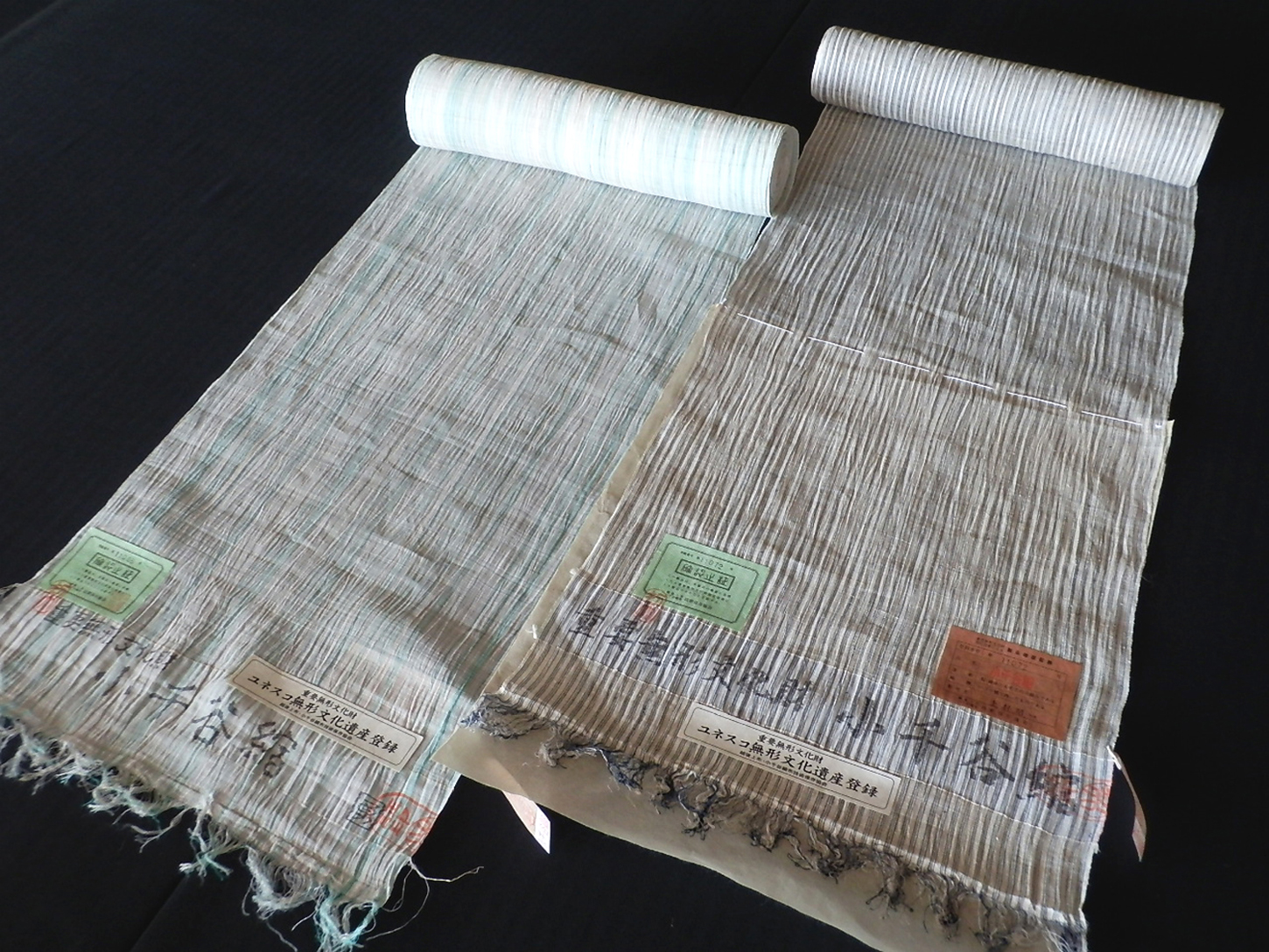小千谷縮
Pronunciation: Ojiya-chijimi
Production area: Ojiya City, Niigata
Ojiya-chijimi is a high-quality hemp textile woven from Choma (ramie), known for its distinctive crimped texture (Shibo) and refreshing feel. Its origin is attributed to Mr. Jiro Masatoshi Hori, who came from Banshu Akashi in the early Edo period and improved upon Echigo hemp cloth to complete Ojiya-chijimi. The ramie fibers are finely split, joined into long threads, and woven with painstaking care, aligning each patterned weft thread (yokoito) with the warp. It is said that artisans move their hands as many as 900 times just to weave one shaku (about 30 cm). After weaving, the cloth is spread on snow fields for bleaching—a process called Yukizarashi (snow bleaching), which has become a seasonal tradition heralding spring in Ojiya. This traditional method earned Ojiya-chijimi the designation of Important Intangible Cultural Property in 1955.
Japan’s First UNESCO Recognition in Dyeing and Weaving
In 2009, Ojiya Chijimi (Ojiya City) and Echigo Jofu (Minamiuonuma City) were jointly registered as UNESCO Intangible Cultural Heritage.
1. All yarns must be hand-spun from ramie.
2. Kasuri (ikat) patterns, if used, must be made by Kubiri (resist-tying).
3. The textile must be woven on an Izaribata (sitting loom).
4. Crimping (Shibotori) must be done through Yumomi (kneading in hot water) and Ashibumi (foot pressing).
5. Bleaching must be performed by Yukizarashi (snow bleaching).




















